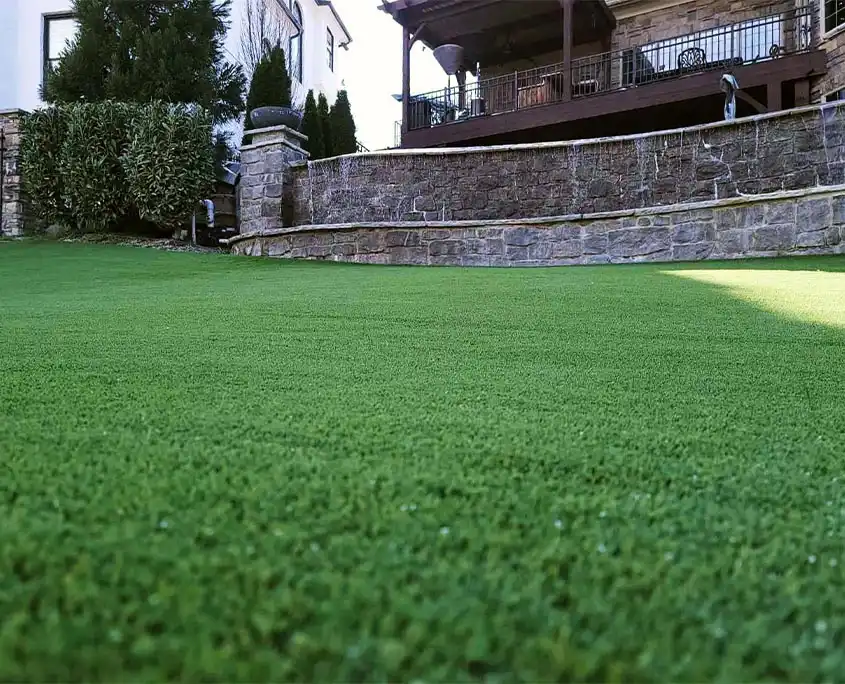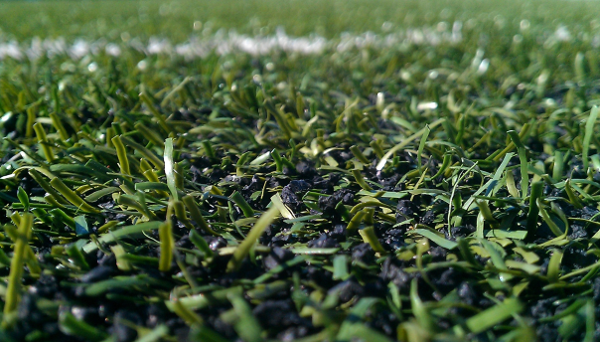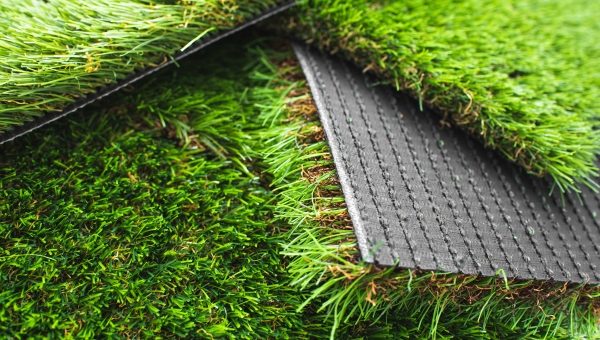See Why Homeowners Prefer Synthetic Grass for Lasting Landscape Design Practices
As homeowners progressively focus on sustainability in landscape design, man-made lawn has emerged as a compelling alternative to typical grass. What continues to be to be explored is the full scope of advantages that man-made grass can supply to house owners and the setting alike.
Water Preservation Benefits
Among one of the most substantial benefits of man-made turf is its duty in water conservation. Typical turf yards call for considerable quantities of water to preserve their lush appearance, typically bring about overuse of local water resources, especially in arid areas. In contrast, synthetic grass eliminates this need entirely, as it does not need irrigation. This not only conserves water however likewise minimizes the stress on local water supply, particularly throughout drought conditions.
Furthermore, the installment of fabricated grass can add to a much more sustainable landscape. Home owners can substantially lower their water bills, permitting reallocation of sources to various other environmental campaigns or family usages. Additionally, synthetic grass is made to withstand various climatic problems without the requirement for supplementary watering, making it a perfect option for regions facing water deficiency.
The ecological advantages extend beyond immediate water financial savings. By reducing water usage, synthetic grass helps to mitigate the effects of climate modification, maintaining essential environments that are endangered by extreme water extraction. As sustainable landscape design techniques get grip, synthetic grass becomes a liable selection for home owners looking for to produce environment-friendly outdoor spaces.
Minimized Maintenance Initiatives
Synthetic grass considerably decreases maintenance efforts contrasted to traditional lawn yards. With man-made yard, house owners can get rid of the lengthy tasks connected with all-natural landscaping, such as mowing, feeding, and weeding. This not just conserves useful time but also decreases physical labor, making yard care accessible for people of any ages.
Traditional grass require regular cutting to preserve an aesthetically pleasing height, whereas man-made turf remains consistently rich without the demand for cutting. In addition, homeowners no much longer need to use plant foods or pesticides, which are typically called for to maintain natural lawn healthy and balanced.
Furthermore, artificial lawn is sturdy and durable, calling for marginal maintenance past occasional brushing and rinsing to remove particles. This simplicity of maintenance allows house owners to enjoy their outdoor spaces without the constant fear of upkeep, providing even more time for recreation and family activities. Ultimately, the reduced maintenance efforts related to synthetic grass make it an enticing alternative for those seeking a low-maintenance, visually appealing landscape.

Environmental Effect Decrease
There is a growing acknowledgment of the environmental benefits linked with synthetic grass, specifically in terms of water preservation and reduced chemical use. Conventional lawns require considerable quantities of water, especially in drought-prone regions, leading to boosted pressure on local water sources. On the other hand, synthetic lawn gets rid of the demand for watering, considerably minimizing water consumption and advertising sustainability.
Furthermore, traditional grass maintenance typically involves the application of pesticides, herbicides, and fertilizers, which can contribute to dirt and water air pollution. Synthetic grass mitigates this ecological threat by calling for minimal upkeep and practically removing the demand for unsafe chemicals. This not just enhances soil health and wellness yet also protects neighborhood environments from toxic drainage.
Moreover, the manufacturing of all-natural lawn lawns typically includes using nonrenewable fuel sources for mowing and landscape design equipment, additional contributing to greenhouse gas discharges. By selecting check it out synthetic grass, property owners can significantly lower their carbon footprint connected with yard care tasks.
Aesthetic Charm and Flexibility
In addition to its ecological advantages, synthetic grass uses considerable visual appeal and adaptability for landscaping. Home owners can accomplish a lush, green look year-round, removing the seasonal changes typically associated with natural turf. This consistent aesthetic not just improves the aesthetic appeal of a property but likewise contributes to a properly maintained and sleek look.
In addition, artificial turf is offered in a range of colors, designs, and textures, permitting personalization to match private preferences and design motifs - Phoenix turf companies. Whether used in household gardens, commercial areas, or leisure areas, it can seamlessly integrate into varied landscape design layouts, from modern-day minimal to lush exotic settings
The versatility of synthetic grass expands past mere look; it can be mounted in various locations, consisting of rooftops, patio areas, and also interior areas, producing opportunities for distinct landscaping solutions. Additionally, it appropriates for a series of activities, from kids's play locations to pet-friendly settings, providing capability without compromising style.
Eventually, the visual appeal and adaptability of synthetic grass make it an appealing option for home owners seeking lasting landscaping options that do not give up beauty for environmental obligation.

Long-Term Price Cost Savings
One of the most compelling advantages of artificial lawn is its potential for long-lasting price savings. Unlike all-natural turf, which calls for regular upkeep-- consisting of mowing, watering, fertilizing, and insect control-- fabricated lawn dramatically reduces these recurring expenses.
In addition, synthetic grass has a life expectancy of 15 to 25 years, depending upon its top quality and usage. This longevity reduces substitute prices, making it an extra economical option in the long run. In addition, the first financial investment in synthetic grass can commonly be recovered via the financial savings accumulated over time.
While the upfront cost may appear greater compared to turf visit this web-site setup, the cumulative cost savings from lowered maintenance and water use usually surpass these preliminary expenditures. Eventually, the fostering of synthetic grass not just promotes a sustainable landscaping solution but also offers home owners an economically smart alternative that aligns with long-term budgeting objectives.
Final Thought
Synthetic grass emerges as an engaging choice for sustainable landscaping, using considerable advantages in water conservation, decreased upkeep initiatives, and decreased ecological influence. Its visual appeal and adaptability improve the aesthetic landscape while lining up with modern-day sustainability objectives. Moreover, lasting expense savings add to its appearance for home owners. As neighborhoods progressively prioritize environmentally pleasant practices, the adoption of synthetic grass stands for a modern step toward accomplishing resistant and sustainable landscapes.
Additionally, artificial lawn is designed to endure various weather problems without the requirement for extra watering, making it a perfect option for regions facing water scarcity. (Arizona turf)

Synthetic grass arises as an engaging choice for lasting landscape design, supplying considerable advantages in water conservation, lowered maintenance efforts, and decreased ecological effect.